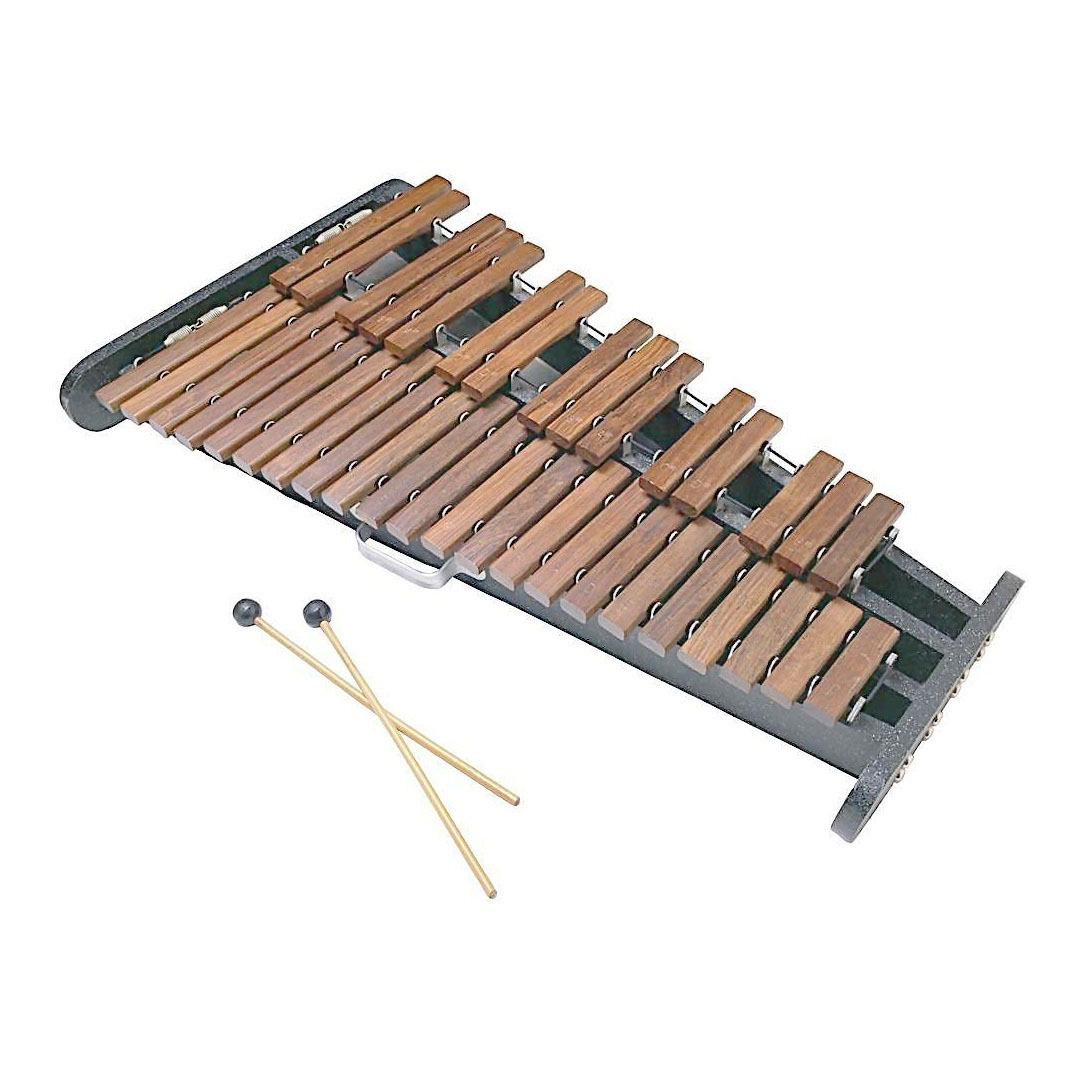muqin overview
 The xylophone (pinyin: mù qín) is a percussion instrument composed of a set of small rectangular wooden blocks. According to the length of the wooden blocks, these wooden blocks are arranged in a certain order. When playing, two wooden mallets are tapped on the wooden block, making a dry percussion sound that is slightly like a bone. The sound quality is strong and harsh, and it has extraordinary penetrating power.
The xylophone (pinyin: mù qín) is a percussion instrument composed of a set of small rectangular wooden blocks. According to the length of the wooden blocks, these wooden blocks are arranged in a certain order. When playing, two wooden mallets are tapped on the wooden block, making a dry percussion sound that is slightly like a bone. The sound quality is strong and harsh, and it has extraordinary penetrating power.The xylophone generally referred to is the high-pitched xylophone, which is often used in classical music performance. The keys are narrow, the range is high, and the tone is crisp. The common xylophone is also the marimba. The keys are narrow from high to low, with a wide range and rounded tone.
The earliest historical records appear around the 9th century AD. At that time, it was discovered that people knew the existence of musical instruments in which wooden sticks of different sizes were arranged on a rack and then struck with the sticks. The bara wind xylophone in Africa is made by cutting the top of the gourd and putting it under the wooden stick to make a resonator, which can be said to be the prototype of the modern xylophone.
The modern xylophone has a range of three octaves, and the notation of the xylophone in the past was an octave lower than the actual pitch. But the xylophone needs the accompaniment of other instruments (such as piano, orchestra, etc.) to bring out its unique sound and make it more attractive.
- Pinyin:mù qín
- foreign name:Xylophone
- Classification:melodic percussion
- origin:Africa
- popular area:Southeast Asia, Africa, Central and South America, etc.
overview of other similar instruments
- sanyanxiao overview
- Daguangxian overview
- Leiqin overview
- hahao overview
- yandundagu overview
- Han Xiaozheng overview
- Fang Xiang overview
- guanzi overview
- zhuqin (Dao Qin) overview
- zhuiqin overview
- bangzi overview
- three-stringed piano overview
- Gehu overview
- xiao overview
- xiaokonghou overview
- Konghou overview
- Sheng overview
- suona overview
- hulusi overview
- gushao overview
 渝公网安备 50010702504639号
渝公网安备 50010702504639号